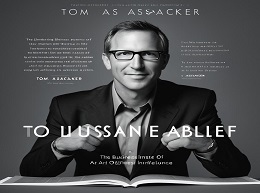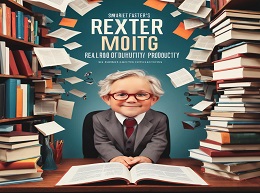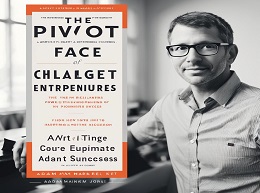Digital Minimalism

Digital Minimalism: A Comprehensive Review
In an age dominated by screens and incessant digital noise, Cal Newport's "Digital Minimalism: Choosing a Focused Life in a Noisy World" emerges as a beacon for those seeking to reclaim their attention and live more intentionally. This insightful book delves into the philosophy of digital minimalism, offering practical advice for reducing digital distractions and enhancing meaningful engagement with technology. Here, we explore the core themes of Newport’s work, supported by engaging examples and actionable insights.
The Philosophy of Digital Minimalism
Newport begins by defining digital minimalism as a philosophy that encourages individuals to be intentional about their technology use. The central tenet is that less is more when it comes to digital tools and social media. Rather than advocating for a complete digital detox, Newport suggests a more sustainable approach: selectively using technology to support one's values and goals.
Example: Newport contrasts the experiences of two individuals: one who mindlessly scrolls through social media for hours and another who uses technology sparingly, only for specific purposes such as work and maintaining close relationships. The latter person experiences greater satisfaction and less stress, highlighting the benefits of digital minimalism.
Principle 1: Clutter is Costly
Digital clutter, like physical clutter, can overwhelm and distract us. Newport argues that every app, notification, and digital interaction demands a slice of our finite attention and energy.
Example: Consider the myriad notifications from social media, email, and news apps. Each alert interrupts our focus, leading to fragmented attention and decreased productivity. Newport suggests turning off non-essential notifications and setting specific times for checking emails and social media, thereby reducing digital clutter and reclaiming attention.
Principle 2: Optimization is Key
Newport emphasizes the importance of optimizing the use of necessary digital tools. This means using technology in a way that maximizes its benefits while minimizing its downsides.
Example: Newport highlights the case of a freelance graphic designer who uses specialized software for work but limits personal social media use to 30 minutes a day. By optimizing her digital habits, she enhances her productivity and maintains a healthy work-life balance.
Principle 3: Intentionality is Crucial
At the heart of digital minimalism is the practice of intentionality. Newport encourages readers to ask themselves whether each digital tool they use aligns with their core values and contributes positively to their lives.
Example: A university student might use a study app to organize coursework and deadlines, which supports academic goals. Conversely, spending hours on gaming apps might detract from study time and social interactions. By being intentional, the student can make more deliberate choices about technology use.
The Digital Declutter Process
Newport introduces the concept of a "digital declutter," a 30-day process designed to help individuals reassess their relationship with technology and establish healthier habits. This period involves temporarily removing optional digital tools and then gradually reintroducing them in a more controlled manner.
Step 1: Define Your Rules
The first step in the digital declutter is to define which digital tools are essential and which are optional. This requires honest self-assessment and clarity about one’s goals and values.
Example: A marketing professional might determine that email, project management software, and a few industry-specific apps are essential for work, while social media and news apps are optional.
Step 2: Take a Break
Next, Newport advises taking a break from all optional digital tools for 30 days. This hiatus helps break the cycle of compulsive use and allows for reflection on how these tools impact one's life.
Example: During the break, a person might replace time spent on social media with reading, exercising, or spending quality time with family and friends.
Step 3: Reintroduce with Intention
After the 30-day break, individuals can reintroduce optional digital tools, but only if they add significant value to their lives. This step involves setting boundaries and creating rules for how and when to use these tools.
Example: Someone might decide to reintroduce social media but limit its use to 20 minutes a day and only follow accounts that provide genuine inspiration or educational content.
Practical Strategies for Digital Minimalism
Newport provides several strategies for maintaining digital minimalism beyond the declutter process.
Strategy 1: Schedule Time for Technology
By scheduling specific times for checking emails and social media, individuals can prevent these activities from encroaching on more important tasks and free up mental space for deeper work.
Example: A writer might designate 30 minutes in the morning and evening for checking emails, allowing uninterrupted time during the day for creative writing.
Strategy 2: Develop High-Quality Leisure Activities
Replacing mindless digital consumption with high-quality leisure activities is crucial for long-term success in digital minimalism. Newport advocates for hobbies and activities that provide fulfillment and enrichment.
Example: Instead of browsing the internet for hours, one could take up gardening, join a book club, or learn a musical instrument. These activities offer more lasting satisfaction and personal growth than passive screen time.
Strategy 3: Use Technology to Support Relationships
Newport encourages using technology to enhance, rather than replace, real-life interactions. Video calls, for example, can be a valuable tool for maintaining long-distance relationships, but they should not substitute face-to-face meetings when possible.
Example: A family living apart might schedule regular video calls to stay connected, but also plan occasional visits to strengthen their bond.
The Benefits of Digital Minimalism
The benefits of adopting digital minimalism are profound and far-reaching. Newport outlines several key advantages:
Increased Focus and Productivity
Reducing digital distractions enables individuals to focus more deeply on their tasks, leading to higher productivity and more creative output.
Example: An entrepreneur who eliminates constant notifications can dedicate uninterrupted time to strategic planning and innovation, significantly boosting business performance.
Enhanced Well-Being and Mental Health
Limiting digital consumption reduces stress and anxiety associated with constant connectivity and information overload.
Example: A study cited by Newport found that participants who reduced their social media use experienced lower levels of anxiety and improved mood, underscoring the mental health benefits of digital minimalism.
Improved Relationships
By prioritizing meaningful interactions over superficial digital connections, individuals can strengthen their relationships and build more fulfilling social networks.
Example: Instead of texting, friends might choose to meet in person or have phone conversations, fostering deeper and more meaningful connections.
Embracing Digital Minimalism
"Digital Minimalism: Choosing a Focused Life in a Noisy World" offers a compelling argument for reassessing our relationship with technology. Cal Newport's practical strategies and thought-provoking insights provide a roadmap for those looking to reduce digital clutter and live more intentional, fulfilling lives. By adopting the principles of digital minimalism, individuals can reclaim their focus, enhance their well-being, and foster more meaningful relationships. Whether you're a professional seeking to boost productivity or someone looking to improve your mental health, this book offers valuable guidance on navigating the digital landscape with purpose and intention.
Final Thoughts
Cal Newport’s "Digital Minimalism" is more than just a guide to managing technology use; it’s a manifesto for living a more deliberate and meaningful life. The book’s emphasis on intentionality, quality over quantity, and the pursuit of high-quality leisure activities resonates deeply in our increasingly digital world. For anyone feeling overwhelmed by the constant barrage of digital noise, "Digital Minimalism" provides the tools and inspiration needed to take control and find clarity amidst the chaos.













